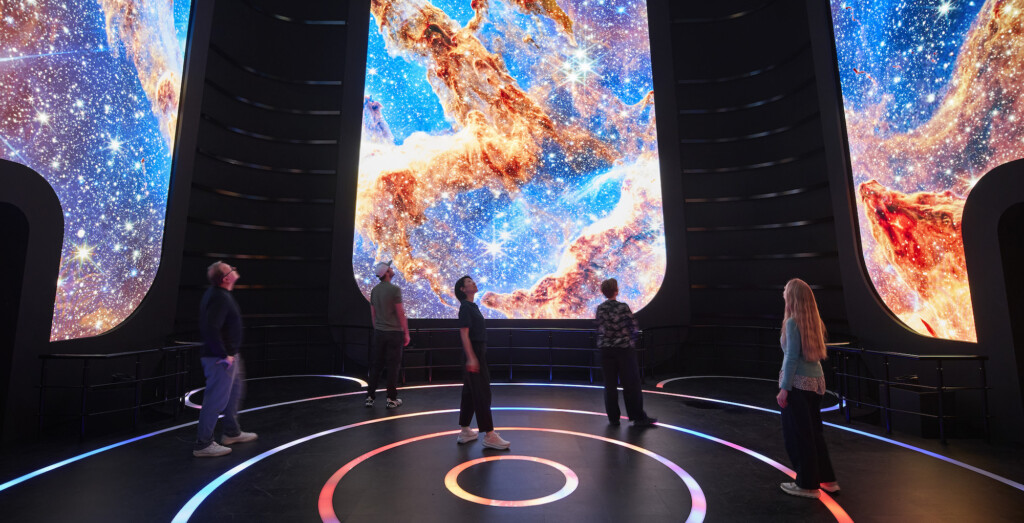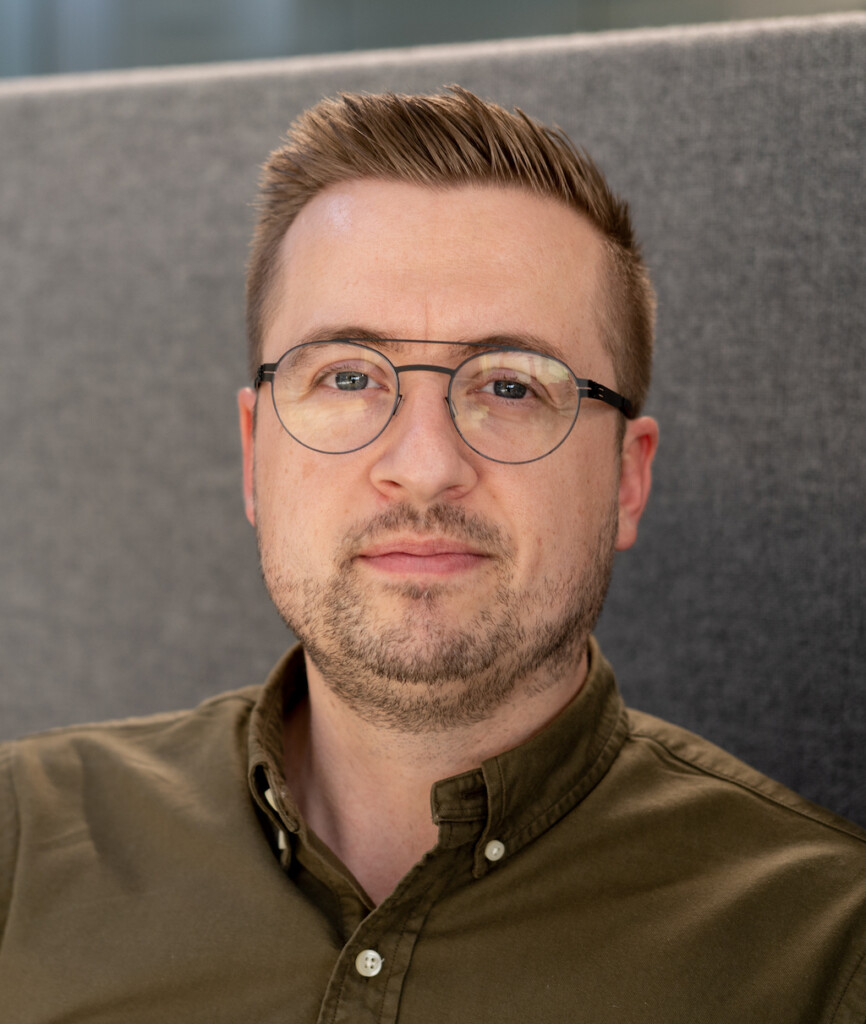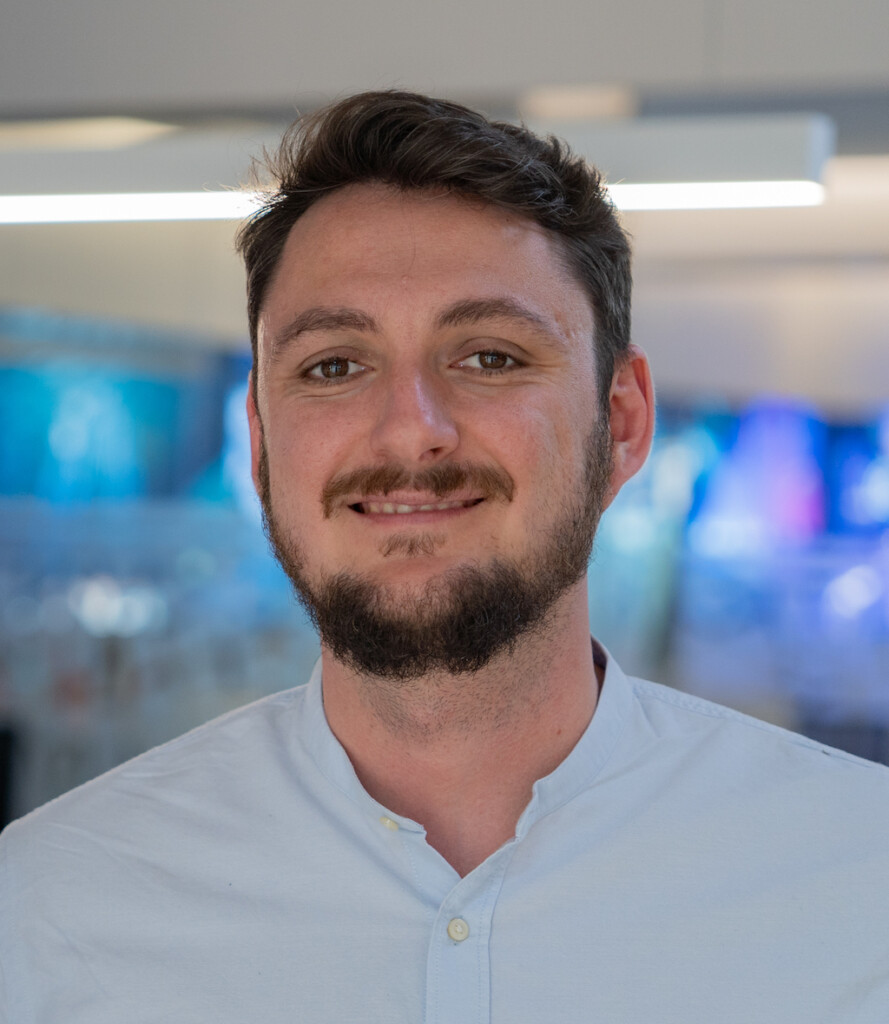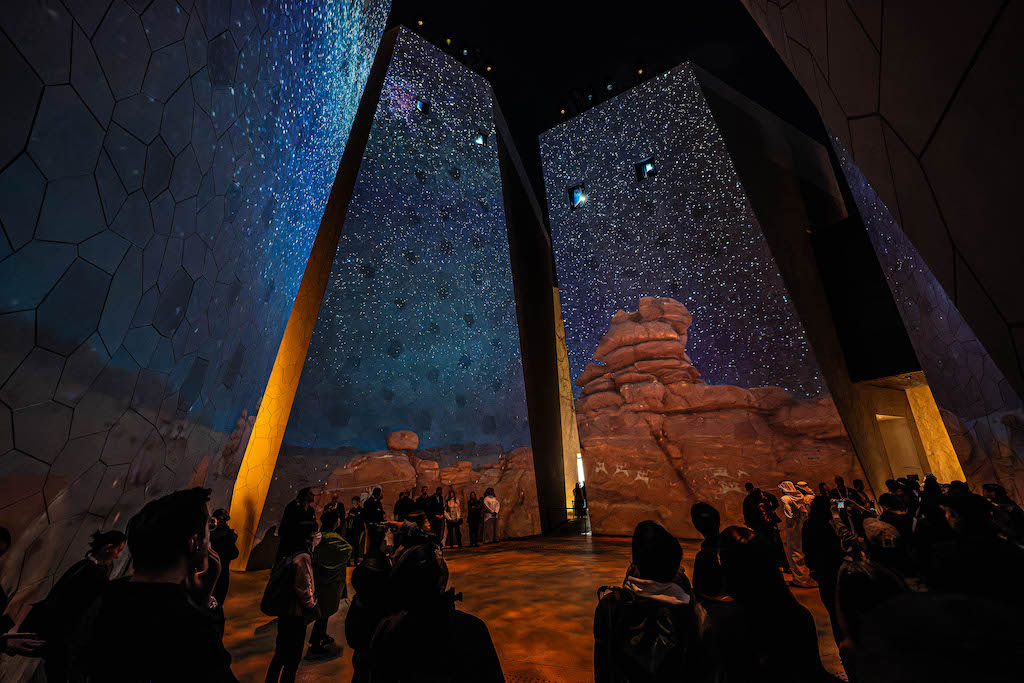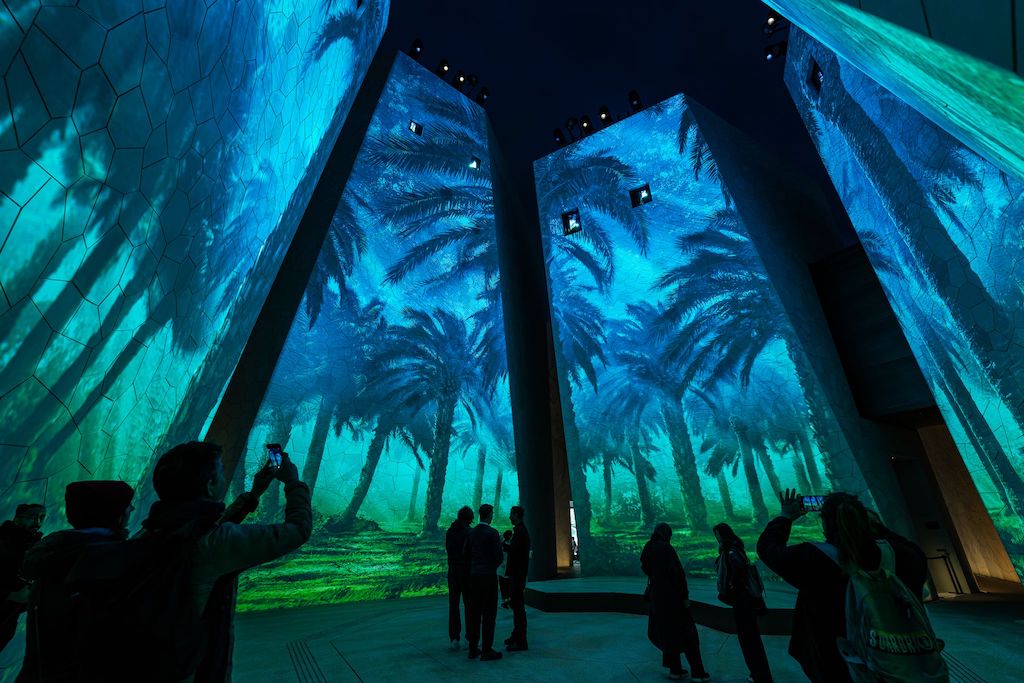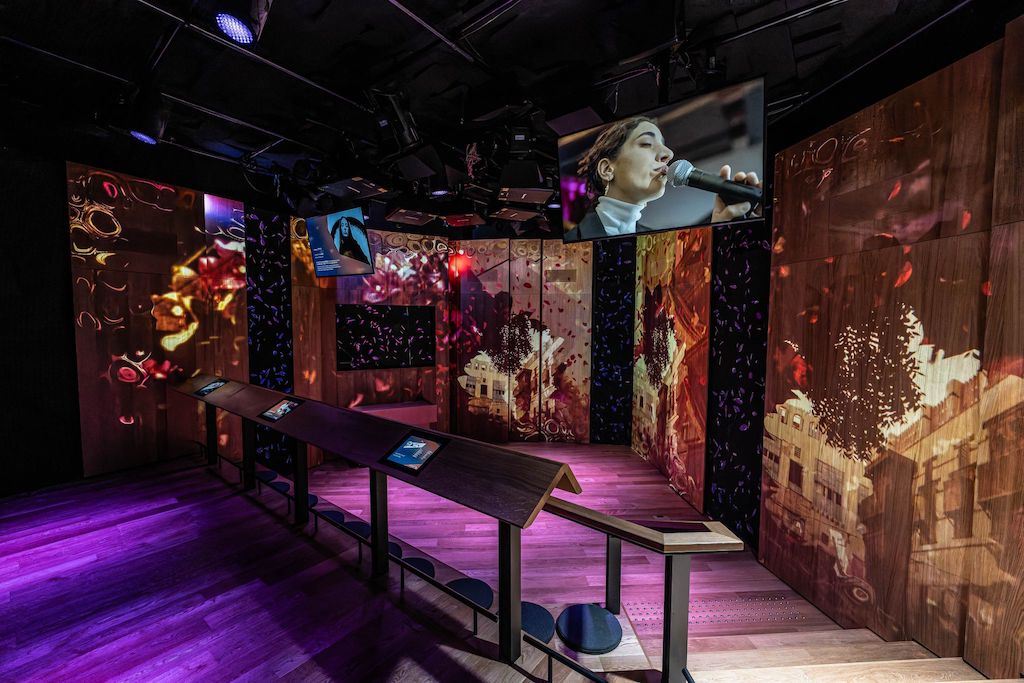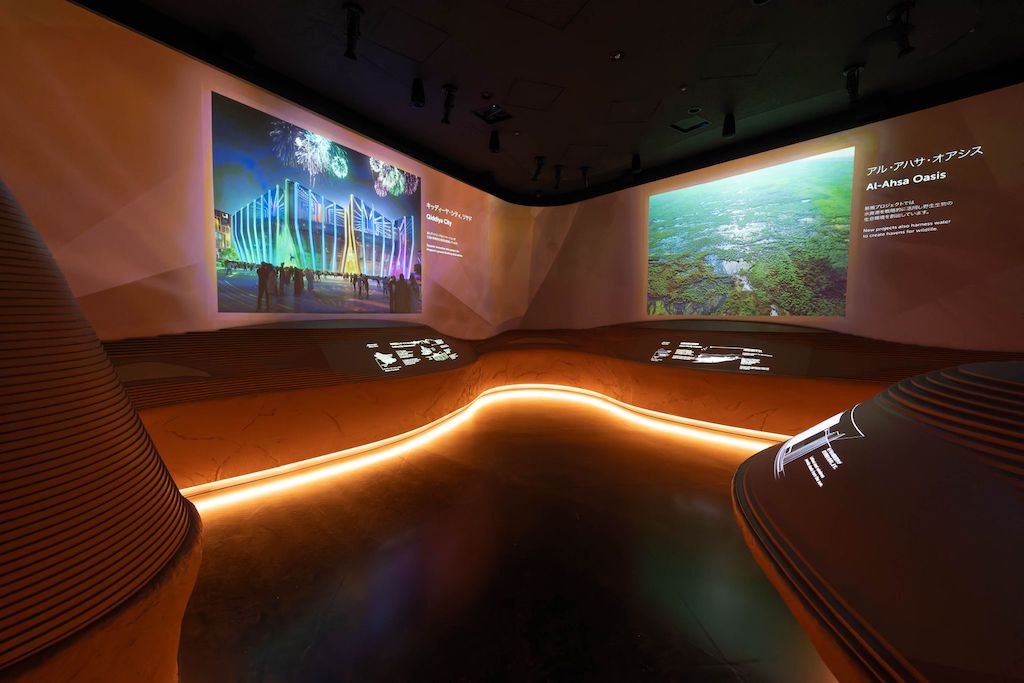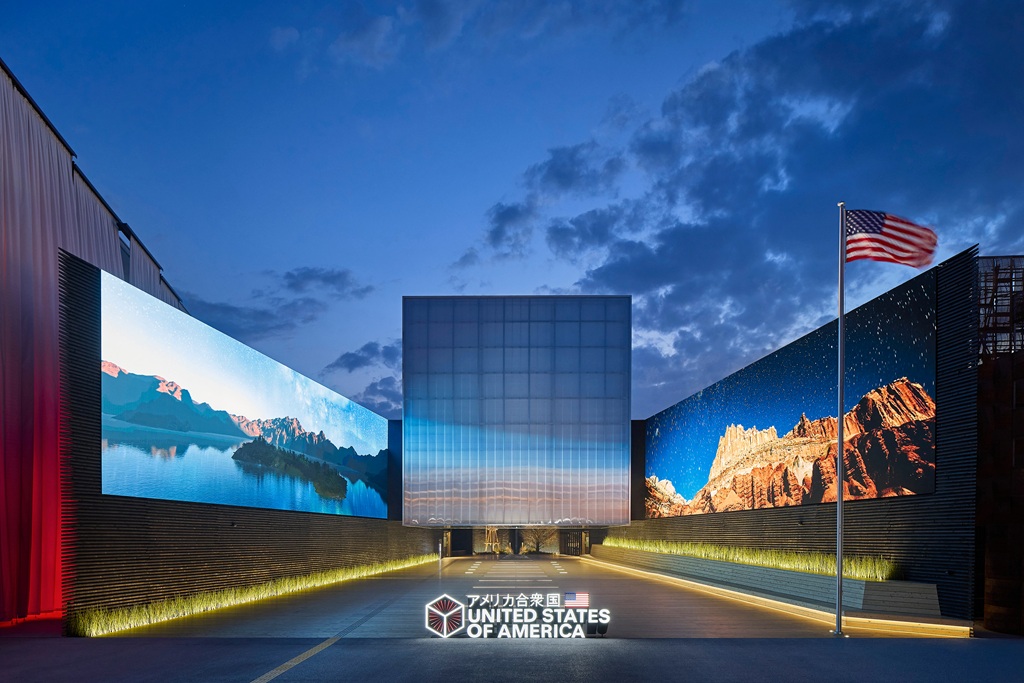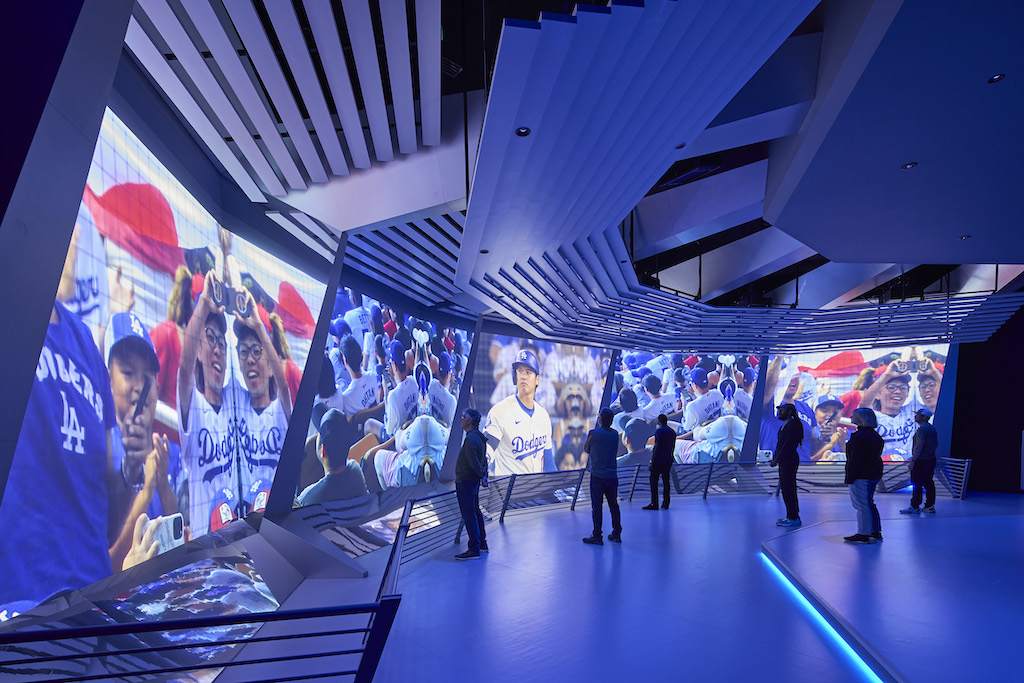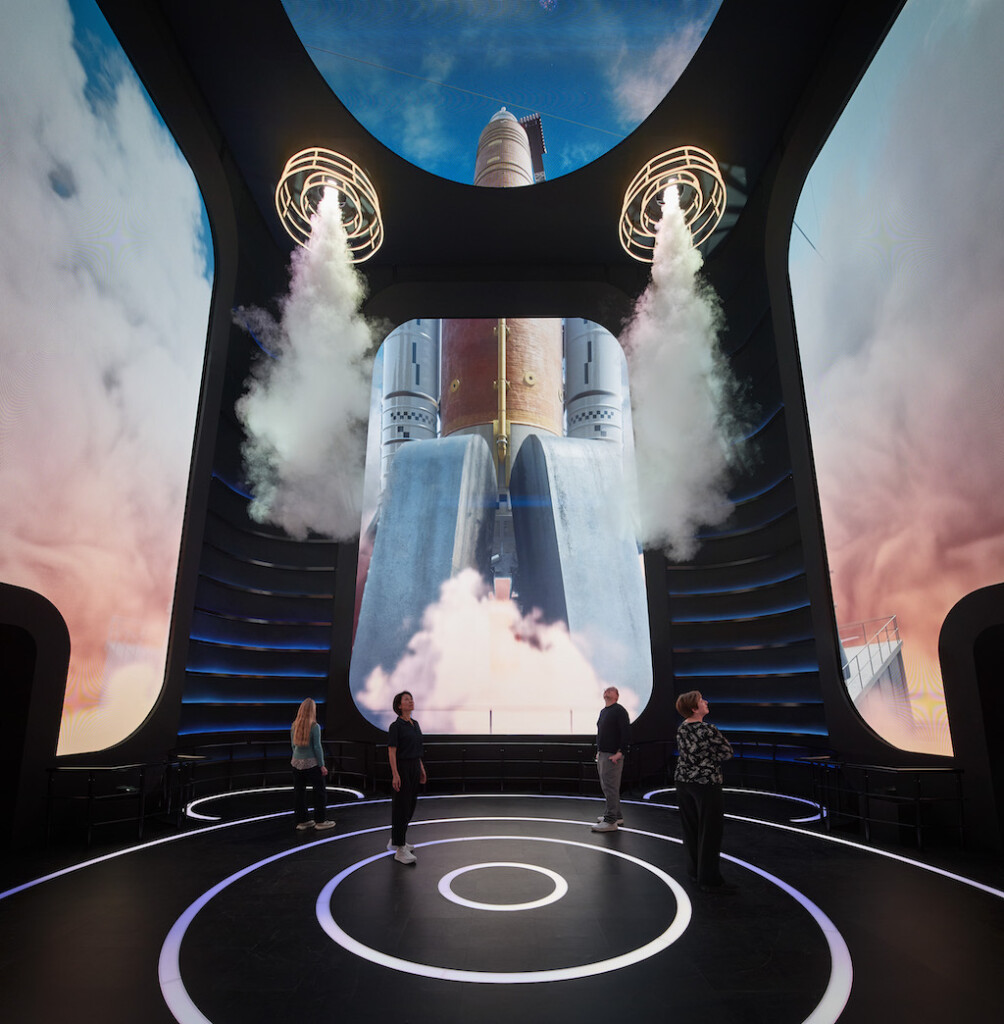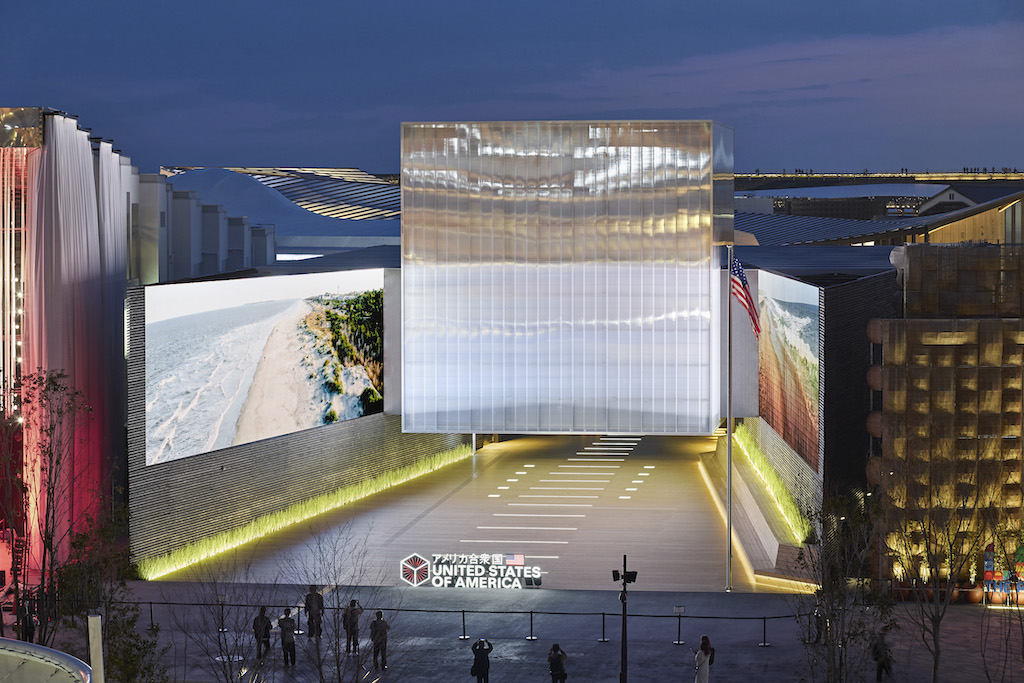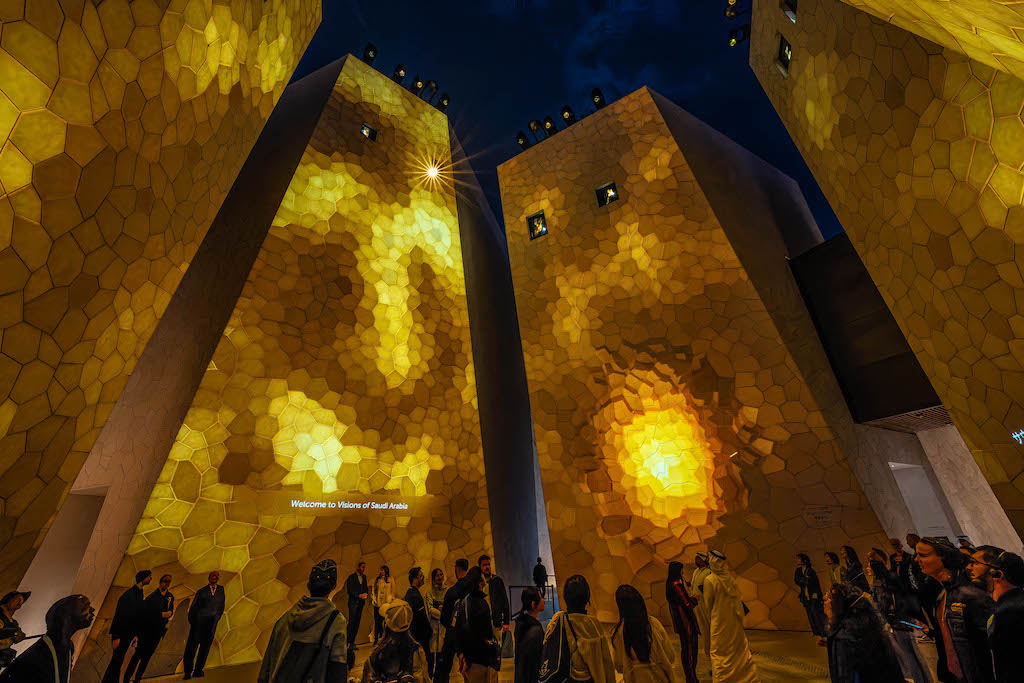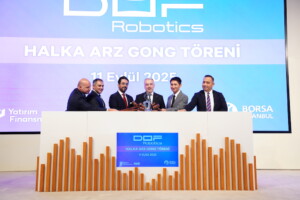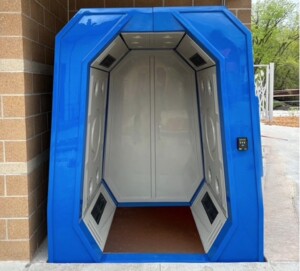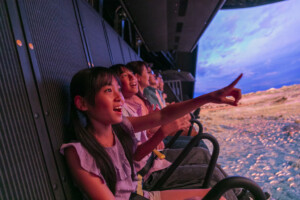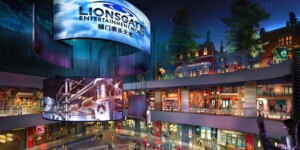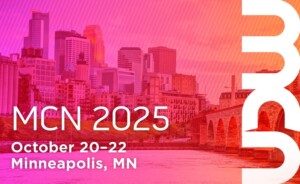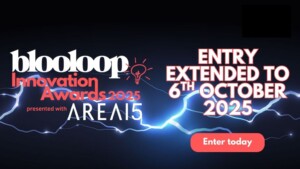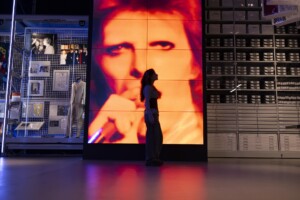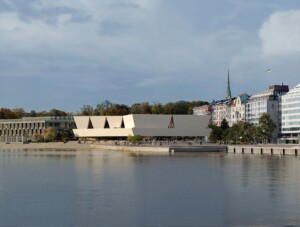Expo 2025 Osaka is currently taking place in Japan, and one of the visionary teams that has helped bring its ambitious theme, Designing Future Society for Our Lives, to life is BeWunder, a specialist in immersive media and experiential design.
The event, running from April 13 to October 13, 2025, invites nations, corporations, and international organisations to explore ideas and technologies that tackle global challenges and co-create a better future through three core sub-themes: Saving Lives, Empowering Lives, and Connecting Lives.
Set to host around 28 million visitors, it is a space for global participants to view exhibits and collaborate on solutions for a sustainable society.
Renowned for crafting engaging, story-driven environments that merge cutting-edge technology with emotional impact, BeWunder is playing a key role in delivering some of the Expo’s most compelling visitor experiences.
In this feature, BeWunder’s senior project manager for the KSA Pavilion, Daniel Charles, and project manager for the USA Pavilion, Kiril Petrovski, discuss how the firm helped to create this dynamic showcase of innovation, culture, and imagination.
Why World Expos?
World Expos serve as global stages for innovation, cultural exchange, and visionary thinking. Unlike trade fairs or tech conferences, they bring together nations, businesses, and civil society in a spirit of collaboration to address shared global challenges, such as sustainability, technology, mobility, and health.
They are also rare, large-scale events that occur only once every five years, each time in a different host country, and often leave lasting legacies—architecturally, culturally, and intellectually.
From showcasing iconic inventions like the Eiffel Tower (Paris, 1889) and the first touchscreen (Knoxville, 1982), to introducing forward-thinking ideas such as sustainable urbanism and AI ethics, World Expos offer a glimpse into humanity’s collective future.
“World Expo projects are in a league of their own,” says Charles. “What makes them truly special is the global stage they operate on; you’re not just building an installation; you’re helping a nation tell its story to the world.
“For BeWunder, being part of something that’s not only technically complex but also culturally meaningful is incredibly rewarding. There’s a unique sense of purpose, pressure, and pride that comes with that. The timelines are tight, the ambitions are high, and the eyes of the world are watching, and we thrive in that environment”
Complex projects
World Expos are, in many ways, the Olympics of exhibitions, says Petrovski:
“On one hand, countries compete to showcase the best of their achievements. On the other hand, agencies, contractors, and exhibition builders work behind the scenes to bring those visions to life.”
What visitors see is only the tip of the iceberg, he adds:
“Behind each pavilion is a world of design, engineering, and decision-making. For every exhibition that gets built, five other equally strong concepts were left behind for various reasons.”
Adding to the complexity is the hybrid nature of the event. Although the installations are permanent, the Expo itself runs for six months.
“This unusual duration creates a unique mix of procurement, mindset, and execution challenges. It is an intensely competitive environment where everyone is working to deliver the best possible Expo, and only the strongest ideas make it to reality.”
For Expo 2025 Osaka, the BeWunder team collaborated on several pavilions, including those of the USA, Saudi Arabia, Austria, Germany, Kuwait, Netherlands, Switzerland, and Uzbekistan.
The KSA Pavilion
The Kingdom of Saudi Arabia Pavilion, designed by Foster + Partners, draws inspiration from the natural shapes found in traditional Saudi Arabian villages. It shows the country’s culture and technology while creating an immersive visitor experience.
The pavilion’s layout features narrow streets leading to a central Saudi Courtyard, a peaceful spot during the day with occasional cultural performances, and an event space at night, including a spectacular 360-degree projection and immersive audio show.
It incorporates sustainable features such as low-carbon materials, photovoltaic technology, and rainwater recycling, aligning with Net Zero goals and top Japanese green building standards. The modular design allows for disassembly and reuse after the Expo.
The KSA Pavilion is one of the most ambitious and technically challenging builds at Expo 2025 Osaka.
“At BeWunder, our strength lies in bridging creative vision with technical execution, says Charles. “We were responsible for the integration of technology into the exhibition fit-out, including detailed design, part procurement, part rental, logistics, and on-site construction delivery.”
What made the difference was BeWunder’s integrated approach, he explains:
“We didn’t just install equipment; we worked closely with creatives, engineers, local Japanese contractors and fabricators to ensure that every interactive element, every immersive room, and every show moment functioned as intended, and in real time.
“From multi-layered projection systems to dynamic audio environments and complex rigging, it was all about precision and responsiveness. Our team brought deep experience in both permanent and temporary exhibitions, which was key in handling the scale and pressure of a project like this.”
Innovative solutions from BeWunder for Expo 2025
When it comes to the innovative solutions implemented by the team in the KSA Pavilion, Charles highlights the Saudi Courtyard as a standout feature.
“It was the jewel in the crown of the Pavilion. Our task was to deliver an immersive, multi-sensory experience on a scale that pushed both creative and technical limits.”
The courtyard featured up to 18-meter-high projection walls, a fully automated stage lift with integrated lighting, spatial audio, and a massive overhead mechanical lighting rig all working together in perfect sync.
“To make this possible, our team had to design alongside consultants and contractors and coordinate across multiple disciplines, projection mapping, show control, custom rigging, lighting automation, and immersive sound, with absolutely no room for error.”
The space transforms throughout the day in response to real-time triggers and dynamic scene changes, and every element had to respond instantly and reliably.
“It’s a great example of how we don’t just install technology — we engineer environments that tell stories and leave lasting impressions.”
The importance of collaboration
While BeWunder wasn’t responsible for the physical exhibition fit-out, the company worked closely with Tanseisha, the Japanese fit-out contractor for the KSA Pavilion at Expo 2025, to ensure everything came together smoothly.
“From the outset, we knew that collaboration would be key, and we invested a great deal of time in building a strong working relationship.
“Naturally, there were differences in working styles, but we quickly found common ground and developed a highly efficient way of communicating. Over time, this evolved into a kind of shared shorthand that allowed us to solve problems quickly and keep things moving.
“That level of coordination was essential to integrating our AVL systems discreetly and effectively, from cable routing to equipment access, all while preserving the visual and spatial integrity of the exhibition. It was a great example of international teamwork at its best.”
The project involved collaborating with a diverse stakeholder group, ranging from the KSA Ministry of Culture to creative and engineering firms such as 59 Studio, Squint Opera, Done & Dusted and Foster + Partners.
“Navigating multiple stakeholders is part of what makes projects like this so dynamic, and also so rewarding,” adds Charles.
“At BeWunder, we see ourselves as a bridge between creative ambition and technical reality. Our role was often to listen carefully, translate big ideas into practical solutions, and then bring those solutions to life without compromising the creative intent.
“It was all about clear communication, proactive coordination, and staying flexible. Rather than seeing competing priorities as roadblocks, we treated them as opportunities to innovate. That mindset helped us find common ground and deliver something that everyone could be proud of.”
A bold project
The KSA Pavilion is unapologetically bold in scale, ambition, and the depth of its storytelling. It’s the second-largest national pavilion after Japan’s and has already welcomed over a million visitors, which shows just how powerfully it resonates.
“But what sets it apart is the way it feels permanent,” says Charles. “Most Expo pavilions are semi-permanent by nature, built to last six months and then taken down. The KSA Pavilion feels like it could stand for a hundred years, both in terms of the architectural quality and the cultural weight it carries.
“It’s not just an exhibition space; it’s a landmark. Foster + Partners created something that feels grounded and timeless, drawing on traditional Saudi streetscapes and natural forms while integrating future-focused design.”
What also makes this pavilion unique is its programme. It’s not a static display; it’s a living, breathing cultural space with hundreds of curated events, from live music and storytelling to workshops and design labs.
“That dynamic spirit, combined with a design that’s built to endure, truly sets the KSA Pavilion apart on the world stage.”
For Charles and his team, the most impactful outcome is the emotional journey that the pavilion takes visitors on:
“From the moment you step inside, you’re immersed in a narrative that’s both personal and cinematic, blending heritage, innovation, and vision for the future. And it’s not just something you see, you feel it.”
BeWunder helps create USA Pavilion at Expo 2025
Meanwhile, the USA Pavilion, designed by Trahan Architects, carries the theme Imagine What We Can Create Together. Its open design, inspired by Japanese footbridges, features a curved central plaza symbolising balance and simplicity.
A floating cube at the pavilion’s centre creates a reflective space for visitors to view changing images of American landscapes, urban scenes, and outer space.
The pavilion features themes such as sustainability, space exploration, education, and entrepreneurship. ES Global constructed the pavilion, while BeWunder contributed to the multisensory experience. BRC Imagination Arts created immersive exhibits, including one that allows visitors to tour the country digitally.
“The USA Pavilion features a linear visitor flow that carries the thematic narrative across multiple scenes,” explains Petrovski. “Visitors move through two separate buildings connected by a central floating structure, with ramps and slopes guiding the journey.”
An immersive experience is created through a cohesive audio theme complemented by engaging visual elements. Over four kilometres of LED tape are integrated into the walls, floors, and ceilings, programmed using GrandMA3 on timecode loops to synchronise seamlessly with audio and video, resulting in a dynamic atmosphere.
In dark spaces, multiple Holofans are used to display the pavilion mascot within vibrant lighting environments. The main exhibit features large, slanted LED walls paired with synchronised audio and lighting to simulate a rocket launch and a journey through the solar system, further enhanced by bass shakers embedded in the floor to add tactile resonance.
Designing the solution
As part of the visitor flow designed by BRC Imagination Arts for the USA Pavilion at Expo 2025, BeWunder had to implement a solution that addressed several key operational constraints, most notably language selection.
“Using operational touch panels, the team could select from three languages, which triggered all eight scenes to play the corresponding audio and video content from start to finish in the sequence of visitors.”
“This was especially challenging due to the pavilion’s pulsed show format. Each group of visitors moved through timed queue-in and queue-out loops, with synchronised shows in each scene.”
At any given time, one group could be watching the show in English in Scene 1, while another experiences it in Japanese in Scene 2, and a third in another language in another scene.
“The system had to manage these concurrent loops while ensuring groups did not overlap or disrupt the flow of movement through the exhibit. We used a Pixera Director, coupled with QSYS touch panels and control programming, along with lighting queues, making for a complex testing, commissioning, programming, and media integration implementation.”
Rising to the challenge
When it came to ensuring the seamless integration of audio, video, and lighting with the overall exhibition fit out, the team faced several challenges, says Petrovski:
“Over 4 km of LED strips had to be precisely cabled across walls, floors, and ceilings, often requiring close coordination between our exhibition build and the base build structures. Elevation changes from ramps further complicated routing.”
Each light had to be individually controlled and integrated into acrylic diffusers.
“We spent significant time planning, and apart from minor adjustments, like switching from LED tape to LED sheets to avoid visible pixels, ultimately, the final result matched the design intent and renderings.”
Audio installation was more straightforward due to early standardisation.
“For video, we installed large, slanted LED walls up to 9 meters high and a suspended circular LED feature. Despite handling both the fit-out and AVL works, we closely coordinated with ES Global to ensure seamless integration.”
It was crucial for BeWunder to coordinate with BRC Imagination Arts, ES Global, and Alchemy as key collaborators and stakeholders on the USA Pavilion at Expo 2025.
“There was a time zone challenge throughout the project, both during the design and engineering period and during the installation. Consistent communication via weekly high-level coordination meetings, coupled with many breakaway calls on various disciplines and integration details.
“Proper discipline with submissions and approvals was paramount as well. There were challenges in coordination on such a fast-paced project, but ultimately, what prevailed was that all teams were working towards delivering the best possible solution, ensuring that operations could begin smoothly and on time.”
A unique project
Speaking about what makes the USA Pavilion stand out compared to other international pavilions at Expo 2025 Osaka, Petrovski says:
“The USA pavilion is a simple yet functional design. It is also blessed with a great location, as most people who arrive from the east gate of the expo will see the USA pavilion first.”
The two giant LED walls outside, installed by BeWunder, capture the beauty of the vast and diverse country, with soft music playing in the queuing area.
“It is also one of the rare pavilions that has such a structured approach to the exhibition, with the theme driving the experience. And, of course, the main show of the pavilion, a literal rocket-ship takeoff into space, definitely ties it all together.
“I enjoyed the final effect the lighting in the pavilion had once it was all programmed with the audio and video content. It gave the exhibition spaces a much more dynamic feel. BRC’s team did a great job programming the content into our system, and the results show that.
“It’s one thing to have a video playback on a projector or a display, but it’s another when an entire room lights up in different colours and ‘breathes’ with the videos and audio.”
BeWunder: storytelling at Expo 2025
Reflecting on what the company’s involvement with this landmark event means for BeWunder’s growth as a leader in immersive experiences, Charles says that the KSA Pavilion is a real milestone for BeWunder, not just in terms of scale, but in the depth of integration, complexity, and collaboration it required:
“It’s a project that demanded everything: technical precision, creative flexibility, cultural sensitivity, and the ability to coordinate across international teams under intense pressure.
“What sets it apart for us is how fully it reflects our turnkey approach. We weren’t just a supplier, we were a core part of bringing the pavilion’s vision to life, from early design coordination through to final commissioning. It tested and showcased our ability to deliver immersive, emotionally resonant experiences at the highest level.
“This project has raised the bar for us and for what’s expected in the world of cultural and immersive exhibition design. It’s opened new doors, expanded our global network, and confirmed that we can deliver world-class experiences even in the most demanding environments.”
Petrovski adds:
“At BeWunder, we bring experiences to life, and this is another one of those projects that embodies a true turnkey approach, where architecture and exhibition design merge seamlessly into a unified experience.
“We played a central role in delivering that vision across all disciplines: from design development and engineering, to fit-out, AVL systems, integration, show programming, and ongoing operational maintenance.
“It was a full-spectrum delivery, where we brought together diverse expertise to execute the project from concept to completion.”
The work done by BeWunder at Expo 2025 Osaka showcases how storytelling and innovation can captivate a worldwide audience. As the world focuses on the future, its immersive experiences are designed to make a lasting impression, bringing the Expo’s vision to life in significant and memorable ways.
